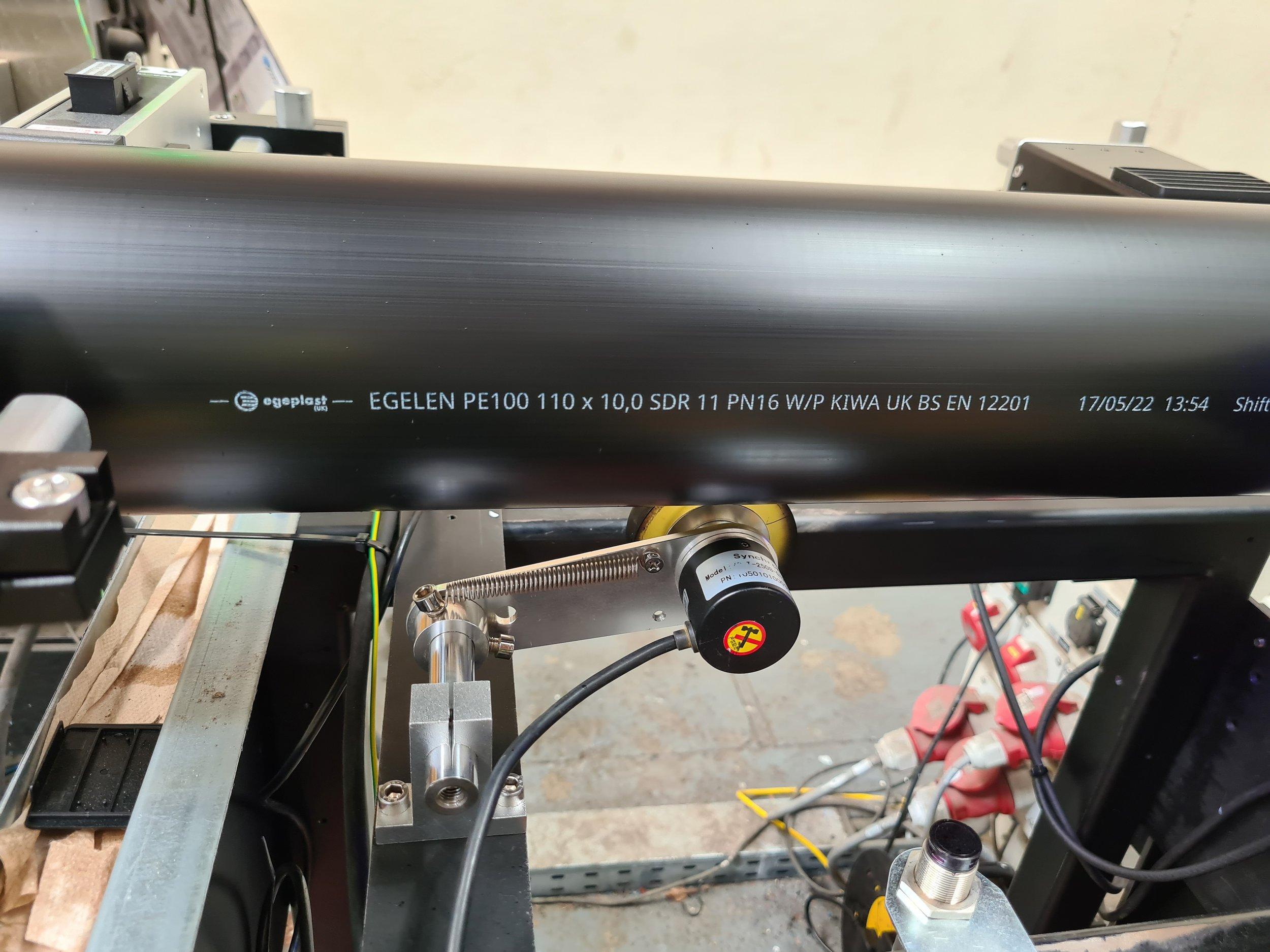Timbermark has set a new standard for printing on difficult surfaces such as PE. A new installation for egeplast UK, which supplies high-quality polyethylene pipes and fittings, prints with UV curing ink to produce a mark on a curved surface that is both high-resolution and solvent resistant, a key requirement for this customer.
Doncaster-based egeplast UK manufactures and supplies co-extruded polyethylene pipes and fittings. The company had been using a continuous inkjet printer to print information on wastewater and drinking water pipes. They wanted to improve the quality of the mark and include their company logo, which was best achieved by switching to a high-resolution printer. In addition, the print needed to be solvent – specifically petrol – resistant.

In this instance, Timbermark used 32mm piezo printheads from its supplier, Yeacode, to solve the problem. Using UV-curing white ink the system can produce an indelible mark, which includes the product specification and dimensions as well as the egeplast logo. The resulting print is sharp, accurate and, crucially, solvent resistant. By using two printheads both sides of the pipe can be marked.
The installation incorporates the inkjet printer and an integrated UV controller. The modular system makes for low maintenance and the touch screen controller means easy operation. The printer and UV curing module are mounted 1mm away from the curved surface of the pipe, producing a sharp print in white against the dark surface of the pipe. Non-contact marking is an essential feature of the system. A contact wheel was considered but rejected as it puts pressure on the pipe and can lead to “ovality” due to squashing.
egeplast UK is confident that the solvent resistance will allow them to enter new markets where this is a specific requirement, and reports that the system is working well after five months of continuous operation.
